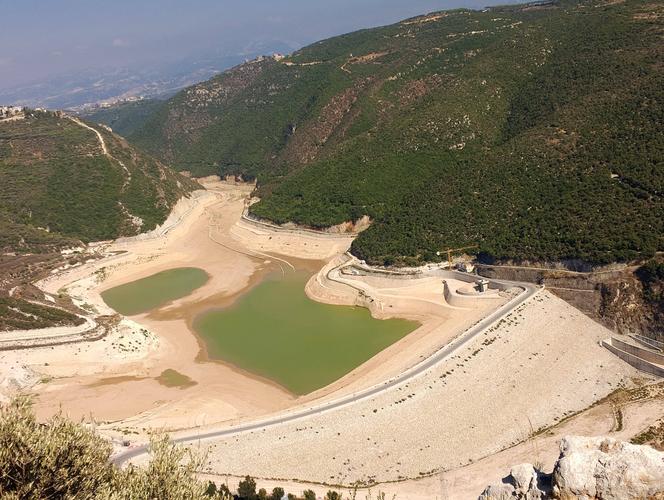LETTER FROM BEIRUT

Few dam projects in Lebanon escape controversy. Located on the Jaouz River in the Batroun Caza in the north of the country, the Mseilha dam is no exception. The first investigating judge in North Lebanon, Samaranda Nassar, ordered the dam to be sealed off in August 2024, although $64 million had already been spent on its construction, which began in 2014.
On her visit to the site, the Lebanese magistrate found the dam abandoned, filled with derelict construction equipment, and occupied only by a janitor and his chicken farm. The financial prosecutor’s office had referred the case to Judge Nassar to investigate suspected misappropriation of public funds. Designed to hold up to 6 million cubic meters of water and supply the region’s villages, the dam has experienced watertightness problems since it was filled at the end of 2019.
An expert opinion is needed on its construction. Meanwhile, several contractors who worked on the site are facing legal proceedings. The figure of $10 million has been put forward as the cost of carrying out necessary waterproofing work. This would be an additional waste of money, according to environmental activists, who say that building a dam in this location defies common sense.
“Any student of hydrology could tell you that the Lebanese mountains are karstic and therefore permeable and unsuitable for dam construction. This is the case at Mseilha. Lebanon is the water tower of the Middle East, as the soil facilitates infiltration of water from rainfall and snowmelt. What’s more, the site is 45 meters above sea level, which is very low and favors the deposition of sediments. The Batroun fault also lies in the reservoir floor, creating a seismic risk,” said Paul Abi Rached, of the NGO Terre Liban.
‘It’s a disaster’
As early as 2014, experts and activists opposing the dam’s construction alerted the ministry of environment that no impact study had been carried out before work began, as required by Lebanese law. “The ministry of the environment issued a decision banning construction and excavation, but the ministry of energy did not respond, and the disaster began,” said Fadi Merheb with feeling. An inhabitant of Hamat in the dam’s local region, Merhab is committed to opposing the project.
“They cut down the oak and olive trees that produced 90% of Hamat’s olives. They disfigured nature. They overshadowed the fortress of Mseilha, built by Prince Fakhreddine to protect the road between Beirut and Tripoli. They demolished the place where the Maronite monks used to live. They prevented the sand, gravel, wood, mud, and sediment that the river brings from its source from reaching the sea. The waters of the River Jaouz have changed, and with them the natural cycles of life. It’s a disaster,” continued this resident, who is calling for the project to be abandoned and the site rehabilitated.
You have 45.81% of this article left to read. The rest is for subscribers only.